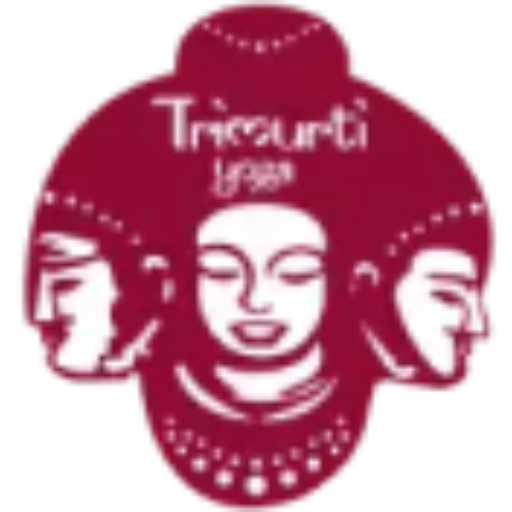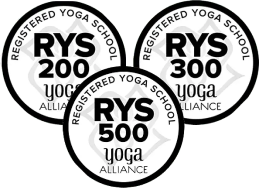
People nowadays want to exercise not only for the physical but also for the mental and social benefits yoga provides. If yoga has helped you in one or the other way, and there is a desire to pass on the experience to others – then becoming a yoga teacher is an excellent option. From this article, one will learn about the requirements, benefits, and procedures to practice and be a yoga teacher or instructor.
What Does a Yoga Teacher Do?
A yoga teacher guides students through various yoga poses, breathing exercises, and meditation practices. They help students align their bodies correctly to prevent injuries and maximize the benefits of each pose. Beyond the physical aspects, yoga teachers also share the philosophical and spiritual teachings of the yoga practice, helping students develop a sense of inner peace and well-being.
Yoga teachers often choose to specialize in a specific style, such as Hatha, Vinyasa, Ashtanga, or Yin Yoga. Some may focus on particular groups, like children, seniors, or athletes. They may work in studios, gyms, wellness centers, or even online, reaching students around the world.
Requirements to Become a Yoga Instructor
The first step to becoming a yoga instructor is completing a 300 hour Yoga Teacher Training course, also known as YTT, and recognized all over the world as the foundational course to provide the basic skills one needs to start teaching yoga. During this program, you will learn:
- Yoga Philosophy: The history and principles of the practice and ethical guidelines and philosophy.
- Anatomy and Physiology: Understanding the human body, how it moves, and how to teach yoga safely to avoid injuries.
- Teaching Methodology: Ability to guide students through a class, including planning class sequencing, cueing, and adjusting postures.
- Practical Teaching: Teaching mock classes to peers and receiving feedback.
After 200 hours of training, one can choose to progress more through other courses that are 300 hours or 500 hours as in the case of YTT. The programs upgrade more knowledge and therefore are well suited to those with a higher interest in specializing and even practicing yoga therapy.
While formal certification is not a requirement to teach yoga, most studios and insurance companies prefer a yoga teacher who is a registered member of Yoga Alliance, the widely accepted organization for setting up standards in yoga teacher training programs.
Steps to Become a Yoga Teacher
- Practice Regularly: First, start by improving your practice. The more you know yoga, the better you will teach. Try out some different styles and attend classes from various teachers to determine what might suit you.
- Choose a Training Program: A good training program now offers a 200-hour YTT course. These courses also come in different formats including full-time, part-time, in-class, and online setups. Decide which one of them will accommodate your schedule and the resources available.
- Complete the Training: It is not very easy to go for a teaching program in yoga. It is a tough learning experience, rather looks like doing some business. Here, you learn what to teach, how to teach, philosophy, anatomy, and the business of teaching yoga.
- Register with Yoga Alliance: If you wish to, you can register with Yoga Alliance after finishing your training as a Registered Yoga Teacher. It’s an intensive experience that requires commitment and openness to learning.
- Start Teaching: Teach your first free classes or donation classes. Teach friends and family or volunteer at local community centers. The more you teach, the more confident and expert you’ll be.
- Build your Online Presence: You could need to have an online social media page or even create a YouTube Channel. In this manner, the presentation of your teaching style and perspective can reach more people.
- Continuous Learning: Yoga is a journey in life. Attend workshops, and advanced training courses, and also keep up with your practice. As you learn, you’ll be able to give much to your students.
Benefits of Being a Yoga Instructor
- Personal growth: The teaching of yoga can enrich one’s practice and wisdom about yoga. It promotes introspection or self-growth, where you become a more thoughtful and empathetic individual, among others.
- Flexible Schedule: Most yoga instructors can easily choose when and where they teach. You could go to any class at a studio in the morning or online evening time.
- Positive impact: As a yoga teacher, you help change the lives of people. It’s highly rewarding to see your students experience freedom from physical discomfort, mental restlessness, and personal change.
- Community: You will bond with other like-minded people and connect with your students and fellow instructors because of the community that develops from yoga.
- Several Opportunities: Besides teaching classes, yoga teachers may lead workshops, and conduct retreats and teacher training programs. They can also be working in corporate wellness writing books or making online content.
Conclusion
Becoming a yoga instructor is such an enriching experience. It requires commitment to your practice, completes a rigorous training program, and also is willing to keep on learning and growing. Whether you want to teach full-time, part-time, or just as a hobby, the skills and knowledge you will acquire will improve your life and the lives of those around you. Follow these steps and commit to your practice and teaching, and you’ll be well on your way to a successful career as a yoga instructor.
Frequently Asked Questions (FAQs)
1. Do I have to be certified for 200 hours to teach yoga?
Ideally, yes, most studios will accept at least a 200-hour certification to be sure that teachers have the foundational skills and abilities needed to take over a safe and effective class.
2. What is Yoga Alliance?
A nonprofit organization, Yoga Alliance sets standards for yoga teacher training programs. You do not necessarily need to get registered with them as an RYT, although such registration could add to your credibility.
3. Can I teach online?
Yes, online yoga teaching is quite popular these days. It is an excellent way to instruct students globally and gain teaching experience.
4. How much does a yoga instructor get paid?
Salaries vary by location, years of experience, and type of class taught. Many new teachers teach at very low levels and increase their charges as they gain experience and develop a client base.
5. Can I teach a specific style of yoga?
Yes. Most yoga teachers teach in some specific style, be it prenatal yoga, yoga therapy, or one of several specialties that work with specific populations like children or seniors.








